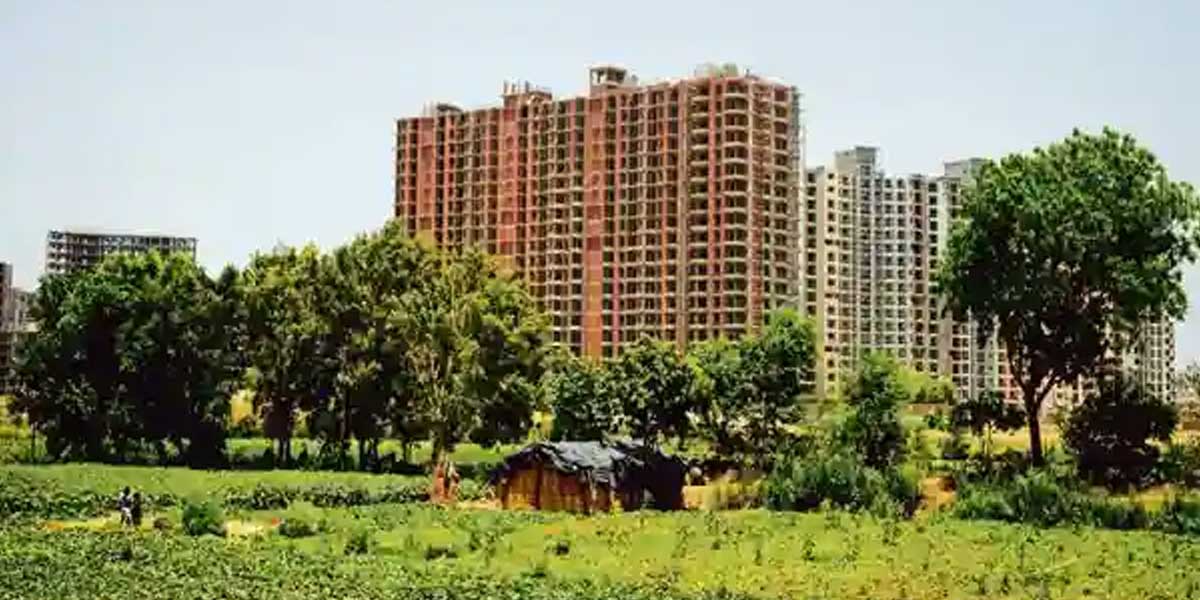Village Development Plan: Rural Delhi presses for planned developed hubs
01 Jan 2022

As land pooling in Delhi gets off to a slow and shaky start, villagers across Delhi’s peripheral areas are asking for planned Village Development Plans that would render these areas well developed and able to accommodate the needs of villagers for the next few decades. This would also help in keeping social problems of exclusion at bay
Villagers in Delhi’s urban villages have a unique demand - make Village Development Plans (VDP) and give them a good life in the land pooling process. Delhi’s land-pooling policy has been much delayed and with norms changing mid-way, the economic viability too has been challenged. Consequently, the rural landowners, who expected to partake of the prosperity that would follow land pooling are now looking out for themselves. Paras Tyagi, co-founder of the Centre for Youth, Culture, Law and Environment (CYCLE), a public policy non-profit, is helping Delhi villagers fight for their rights to a good life after land-pooling.
Villagers who pool their ancestral land, are also required to pay hefty External and Internal Development Charges, (EDC/IDC) which they do not have the capacity to pay. In addition, the amount of land left to the village has always been a dismal Lal Dora area, within which growing families of villagers struggle to exist. The urban villages are outside the city’s development plans and there is rampant over-building, leading to poor quality of life.
Now they are standing up and demanding pre-planning of village areas with a developed residential ring, which can accommodate planned extra demand from the village. The village commons, which even the Supreme Court has ruled belongs to the villagers, is being demanded as the special zone to accommodate schools, colleges, recreational spaces, community centres, markets and milk booths. There is even demand for the green ring to give space for animal husbandry and pisciculture in lieu of the loss of agricultural land. That, however, seems far-fetched in a space that is to become a planned urban area.
The VDP concept existed in Master Plan 2021, a version that never really came to fruition. The Zonal plan for the L-Zone proposed a Village Development Plan, a 383-hectare green area of 100-m around the village and 500-hectare woods on the Gram Sabha land around the village.
The Delhi Development Authority (DDA) has already acquired 25,000 bigha of the Gram Sabha land in 89 villages in Delhi. The Master Plan 2041 proposed that this land in each sector could be pooled by the DDA as a development entity in each sector. It could also “develop this land to meet specific needs/gaps of the respective sectors”. This land would then be outside the purview of FAR and could be used in the master plan for other uses. This is the clause that the villagers have latched on to.
“Each landowner residing in a village and eligible to participate in Land Pooling Policy (LPP) will be eligible for having a residential land in the VDP against a part of their agricultural land.” This way they can trade agricultural land for developed land.
In a plan made by the villagers for Jhuljhuli village, for instance, it is proposed that “Each landowner from the share of his land pooled under LPP may be allowed for allocation of 0-20% of his land, with residential land use, in the VDP. For each acre (4046 sqm) of pooled land, the landowner may like to avail land upto 809-sqm of residential land in the VDP and the rest may be utilized for expansion of the city.”
In the remaining 3200-sqm area in the acre, the ratio of 60:40 proposed in the LPP should prevail. The villager gets 60 per cent of developed land and forfeits 40 per cent to development works. “As the land requirements for public services in the VDP will be met from the Gram Sabha land itself and no such (40%) land is required for residential land in the VDP”.
Currently, villagers cannot borrow money against their land because of faulty or no titles. With inclusive land titling under programmes such as the Swamitva Yojana, they would become productive assets against which they can raise money.
The proposed VDP can actually solve many of the planning and social problems arising out of leaving undeveloped rural areas within urban developments. If executed properly, the VDP villages could well become well-managed islands of prosperity instead of unplanned blots in the cityscape. The introduction of formal planning will help unlock the value of the land which is locked in without titles and proper planning interventions. Also instead of congested hubs, these could well be green oases within the urban sprawl.
E Jayashree Kurup is Director Wordmeister Editorial Services, Real Estate & Cities. She is also Advisor, Communications, National Institute of Urban Affairs
Image Source: Google Images
Related Stories

